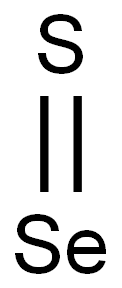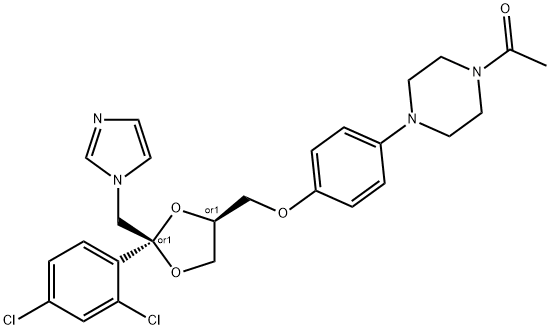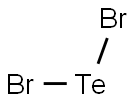Selenium sulfide
- CAS NO.:7446-34-6
- Empirical Formula: SSe
- Molecular Weight: 111.03
- SAFETY DATA SHEET (SDS)
- Update Date: 2023-04-23 13:52:06

What is Selenium sulfide?
Description
Selenium sulfide is a selenium salt that exists as a yellow-orange to bright-orange tablet or powder at room temperature. It is insoluble in water or ether and soluble in carbon disulphide. It is incompatible with acids, metals, strong oxidising agents, chromium trioxide, potassium bromate, silver oxide, and ammonia. Selenium sulfide is used as an active ingredient in anti-dandruff shampoos and as a constituent of fungicides.
Selenium sulfide is an anti-fungal agent as well as a cytostatic agent, slowing the growth of hyperproliferative cells in seborrhoea. Selenium sulfide is the active ingredient often used in shampoos for the treatment of dandruff, seborrheic dermatitis, and tinea capitis, a fungal infection that is primarily a disease of preadolescent children. Selenium sulfide is highly active in inhibiting the growth of P. ovale. It is also a proven cytostatic agent, slowing the growth of both hyperproliferative and normal cells in dandruff and seborrheic dermatitis. A 0.6% micronised form of Selenium sulfide is also safe and effective for dandruff. Selenium sulfide is not present in foods and is a very different chemical from the organic and inorganic selenium compounds found in foods and in the environment.
Chemical properties
Bright-orange powder.Practically insoluble in water and organic solvents.
Chemical properties
There are various selenium sulfides: Selenium monosulfide, SeS, is orange-yellow powder or tablets,
The Uses of Selenium sulfide
Selenium sulfide (SeS2) is used for some medicines, as an additive for medicated shampoos to control dandruff and scalp itching, and in treatment products for acne and eczema.
The Uses of Selenium sulfide
For treatment of tinea versicolor, tinea capitis, dandruff and seborrheic dermatitis of the scalp.
General Description
Orange-yellow tablets or powder. Has a faint odor.
Air & Water Reactions
Insoluble in water.
Reactivity Profile
Ignition takes place when Selenium sulfide is ground with silver oxide. . Inorganic sulfides, such as Selenium sulfide, are generally basic and therefore incompatible with acids. Many of these compounds are reducing agents and therefore react vigorously with oxidizing agents, including inorganic oxoacids, organic peroxides and epoxides. Simple salts of sulfides (such as sodium, potassium, and ammonium sulfide) react vigorously with acids to release hydrogen sulfide gas.
Hazard
Toxic by ingestion, strong irritant to eyes and skin. Questionable carcinogen.
Fire Hazard
Flash point data for Selenium sulfide are not available; however, Selenium sulfide is probably combustible.
Clinical Use
Selenium sulfide is a cytostatic and sporicidal agent available without prescription in a variety of shampoos and lotions for treatment of scalp seborrheic dermatitis.
Safety Profile
Confirmed carcinogen with experimental carcinogenic data. Poison by ingestion. Mutation data reported. When heated to decomposition it emits very toxic fumes of SO, and Se. See also SELENIUM COMPOUNDS and SULFIDES.
Potential Exposure
Selenium sulfide is used for the treatment of seborrhea, especially in shampoos. The chemical is available over the counter as Selsun, a stabilized buffered suspension. FDA reports that selenium sulfide is an active ingredient in some drug products used for the treatment of dandruff and certain types of dermatitis. A dandruff shampoo containing 1% selenium sulfide is available without a prescription and is recommended for use once or twice a week. By prescription, selenium sulfide is available in a 2.5% shampoo or lotion, with the recommended application limited to 10 minutes for 7 days to avoid the possibility of acute toxic effects. Selenium sulfide is also used topically in veterinary medicine for eczemas and dermatomycoses.
Veterinary Drugs and Treatments
Selenium sulfide may be useful in seborrheic disorders (mainly for seborrhea oleosa) and for adjunctive treatment of Malassezia dermatitis,
particularly in dogs exhibiting signs of waxy, greasy or scaly (seborrheic) dermatitis. There may be some residual activity on the skin.
Selenium sulfide possesses antifungal (including sporicidal activity), keratolytic, keratoplastic and degreasing properties. It affects
cells of the epidermis and follicular epithelium (alters the epidermal turnover) and interferes with hydrogen bond formation of keratin
thereby reducing corneocyte production. Selenium sulfide’s antifungal mechanism of action is not well understood.
Carcinogenicity
Selenium sulfide is reasonably anticipated to be a human carcinogen based on sufficient evidence of carcinogenicity from studies in experimental animals.
Shipping
UN2657 Selenium disulfide, Hazard Class: 6.1; Labels: 6.1-Poisonous materials.
Incompatibilities
Incompatible with oxidizers (chlorates, nitrates, peroxides, permanganates, perchlorates, chlorine, bromine, fluorine, etc.); contact may cause fires or explosions. Keep away from alkaline materials, strong bases, strong acids, oxoacids, epoxides. Violent reaction with silver oxide.
Properties of Selenium sulfide
| Melting point: | 111 ºC |
| Boiling point: | 118-119 ºC (DEC.) |
| Density | 3.056 |
| Water Solubility | <0.1 G/100 ML AT 21 ºC |
| CAS DataBase Reference | 7446-34-6 |
| NIST Chemistry Reference | Selenium monosulfide(7446-34-6) |
| EPA Substance Registry System | Selenium monosulfide (7446-34-6) |
Safety information for Selenium sulfide
Computed Descriptors for Selenium sulfide
New Products
4-Aminotetrahydropyran-4-carbonitrile Hydrochloride (R)-3-Aminobutanenitrile Hydrochloride 4-AMINO-TETRAHYDRO-PYRAN-4-CARBOXYLIC ACID HCL 4-(Dimethylamino)tetrahydro-2H-pyran-4-carbonitrile 3-((Dimethylamino)methyl)-5-methylhexan-2-one oxalate 1,4-Dioxa-8-azaspiro[4.5]decane 5-Bromo-2-nitropyridine Nimesulide BP Aceclofenac IP/BP/EP Mefenamic Acid IP/BP/EP/USP Diclofenac Sodium IP/BP/EP/USP Ornidazole IP Diclofenac Potassium SODIUM AAS SOLUTION ZINC AAS SOLUTION BUFFER SOLUTION PH 10.0(BORATE) GOOCH CRUCIBLE SINTERED AQUANIL 5 BERYLLIUM AAS SOLUTION 2-Bromo-1-(bromomethyl)-3-chloro-5-nitrobenzene 2-Bromo-3-nitroaniline N-(3-Hydroxypropyl)-N-methylacetamide 3-Bromo-6-chloropyridazine 4-ethyl-3-nitrobenzoic acidRelated products of tetrahydrofuran








You may like
-
 1-Methyl-6-oxo-1,6-dihydropyridazine-3-carbonitrile 98%View Details
1-Methyl-6-oxo-1,6-dihydropyridazine-3-carbonitrile 98%View Details
99903-60-3 -
 88491-46-7 98%View Details
88491-46-7 98%View Details
88491-46-7 -
 1823368-42-8 98%View Details
1823368-42-8 98%View Details
1823368-42-8 -
 2-(3-(tert-butyl)phenoxy)-2-methylpropanoic acid 1307449-08-6 98%View Details
2-(3-(tert-butyl)phenoxy)-2-methylpropanoic acid 1307449-08-6 98%View Details
1307449-08-6 -
 Ethyl 3-(furan-2-yl)-3-hydroxypropanoate 25408-95-1 98%View Details
Ethyl 3-(furan-2-yl)-3-hydroxypropanoate 25408-95-1 98%View Details
25408-95-1 -
 2-Chloro-5-fluoro-1-methoxy-3-methylbenzene 98%View Details
2-Chloro-5-fluoro-1-methoxy-3-methylbenzene 98%View Details
1805639-70-6 -
 1784294-80-9 98%View Details
1784294-80-9 98%View Details
1784294-80-9 -
 Lithium ClavulanateView Details
Lithium ClavulanateView Details
61177-44-4